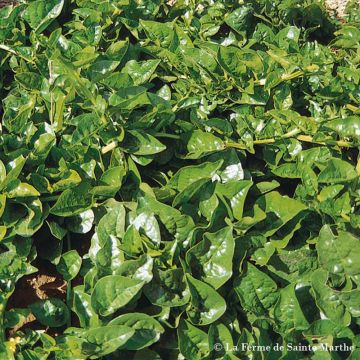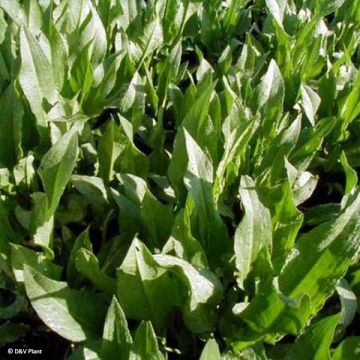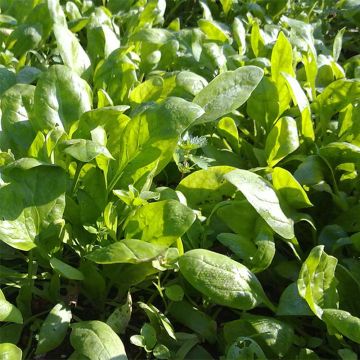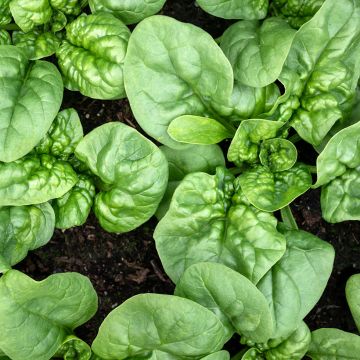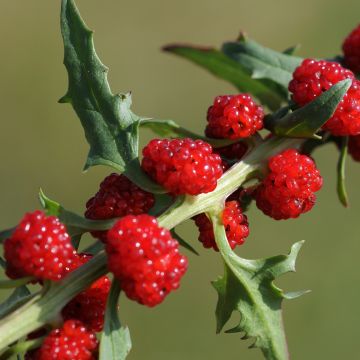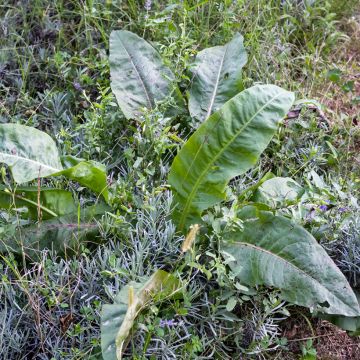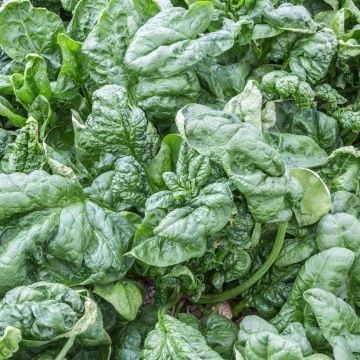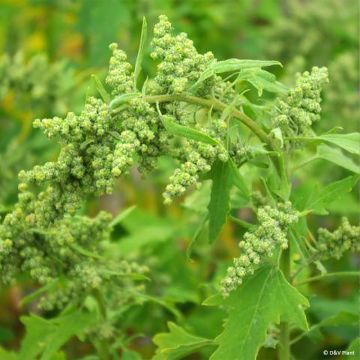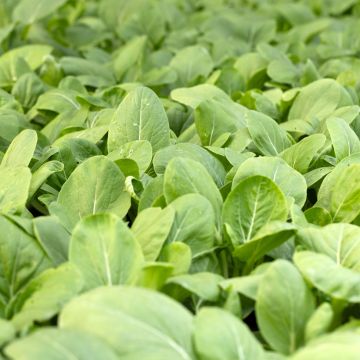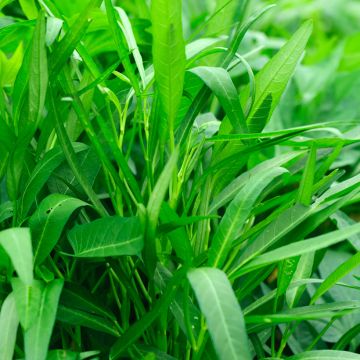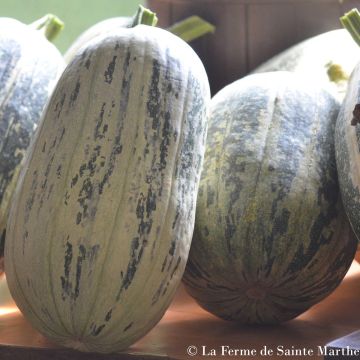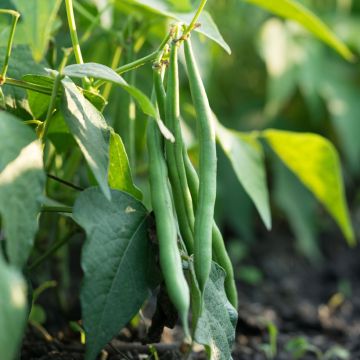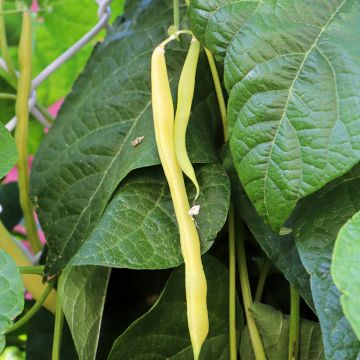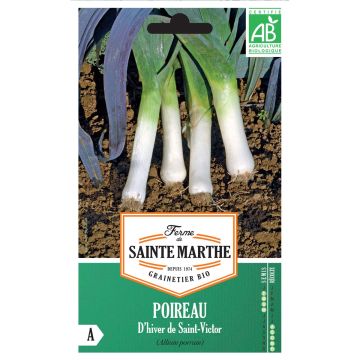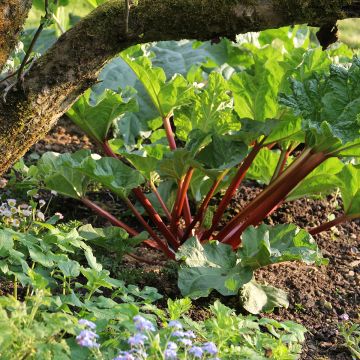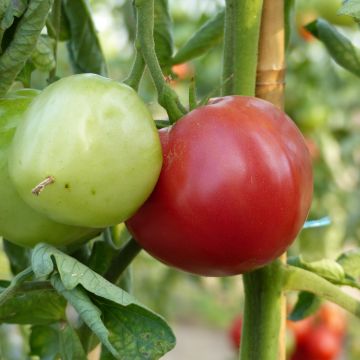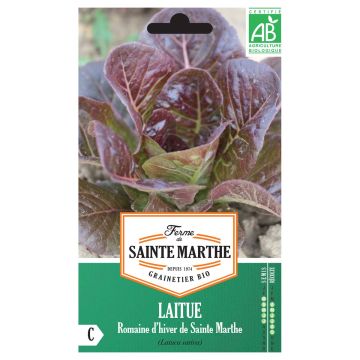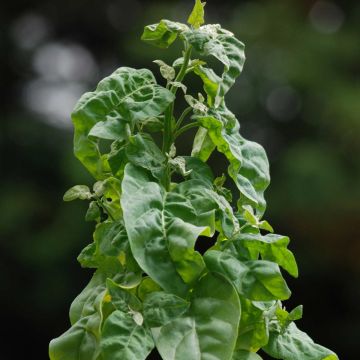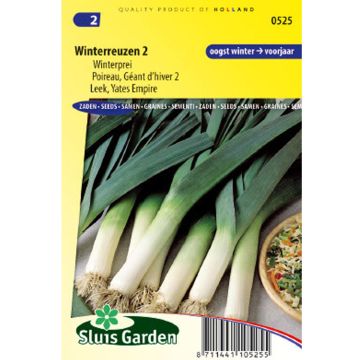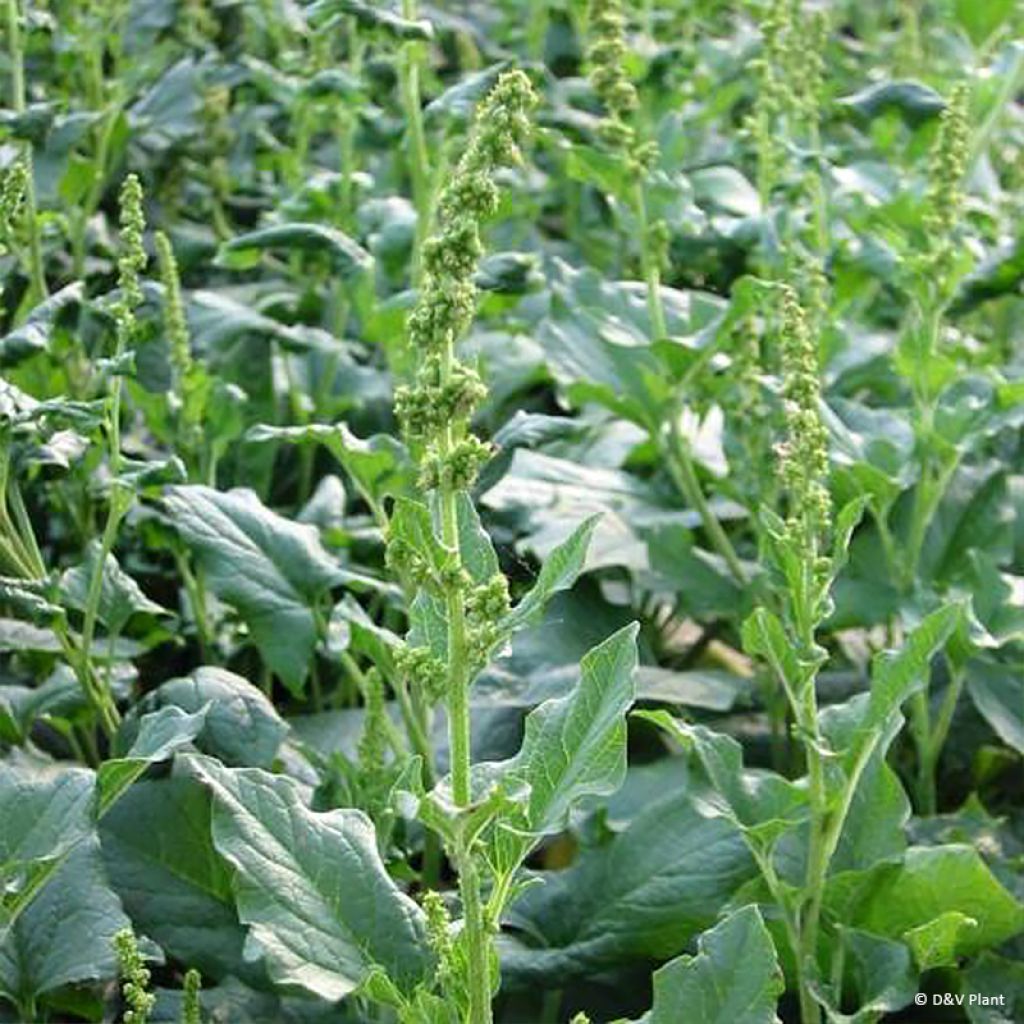

Chénopode Bon Henri en plant - Chenopodium bonus-henricus
Good King Henry in plant - Chenopodium bonus-henricus
Chenopodium bonus-henricus
Good King Henry, Poor-man's Asparagus, Lincolnshire Spinach, Perennial Goosefoot, Mercury Goosefoot, All Good
This item cannot be shipped to the selected country
Delivery charge from €5.90
Delivery to Corse prohibited
More information
Schedule delivery date,
and select date in basket
This plant carries a 6 months recovery warranty
More information
We guarantee the quality of our plants for a full growing cycle, and will replace at our expense any plant that fails to recover under normal climatic and planting conditions.
From €5.90 for pickup delivery and €6.90 for home delivery
Express home delivery from €8.90.
Delivery to Corse prohibited: UE law prohibits the import of this plant from mainland France to Corse as part of the fight against Xylella fastidiosa. Please accept our sincere apologies.
More information

Description
Chenopodium bonus-henricus, Good King Henry, is also known as wild spinach. It is a wild plant that can also be cultivated in vegetable gardens or permaculture for its leaves. A perennial and highly cold-resistant vegetable, it remains in place for several years. The leaves are consumed cooked, similar to spinach. Plant it in April-May or September-October. The leaves can be harvested throughout the season, but those from spring and autumn are more tender.
Good King Henry was frequently picked and consumed during the medieval period. It is one of the ancient vegetables, cultivated for its leaves. This plant is found in the wild, usually at higher altitudes, in alpine meadows and old settlements, or along paths where the soil is rich in nitrogen. There are two versions regarding the origin of its name. The name may refer to Henry III of Navarre, future King Henry IV of France, who greatly appreciated this vegetable. Its name could also come from Old German, 'gut heinrich' (heinrich meaning plants that grow spontaneously near houses). Its vermifuge qualities may have earned it the name Good King Henry, in contrast to the mercury plant known as 'mauvais henri'.
Unlike white goosefoot and giant goosefoot, Good King Henry is a perennial, remaining in place for several years, approximately 4 to 5 years. The foliage disappears in winter and new buds appear in spring. The flowering, in the form of small green spike-like flowers, occurs from June to September. Good King Henry reaches a height of 20 to 60 cm (8 to 24in) at maturity. Its leaves are large and wide, triangular or arrowhead-shaped, often undulating at the edges. The upper side is a shiny dark green, while the underside is covered in silver hairs, with a floury texture to the touch.
It is rich in vitamins A and C, as well as minerals. They contain oxalic acid (like sorrel), so their consumption is not recommended for people with kidney problems.
Harvesting: Pick the leaves as needed, preferably in the morning. Harvesting takes place in spring and autumn when the leaves are the most tender. In spring, the young shoots are cut to a height of 20 cm (8in), they are soft enough to be steamed. The older leaves will be cooked like spinach.
Storage: The leaves should be consumed quickly after harvesting, ideally on the same day.
Gardening tip: To limit watering, we recommend avoiding direct sun exposure and mulching the soil in summer with thin, successive layers of grass clippings, if possible mixed with dead leaves. This protection, which keeps the soil moist, also reduces weed growth.
Report an error about the product description
Harvest
Plant habit
Foliage
Other Spinach
Planting and care
Good King Henry is sensitive to drought, which encourages early flowering at the expense of leaf production. This plant likes deep soils, rich in organic matter and nitrogen, that do not dry out. Avoid planting it in a too hot and sunny location. From May, spread a mulch of dead leaves to keep the soil moist. Water abundantly at the base throughout the summer.
Cut the flower stalks to promote leaf development.
Cultivation
Care
Intended location
-
, onOrder confirmed
Reply from on Promesse de fleurs
Old and forgotten vegetables
Haven't found what you were looking for?
Hardiness is the lowest winter temperature a plant can endure without suffering serious damage or even dying. However, hardiness is affected by location (a sheltered area, such as a patio), protection (winter cover) and soil type (hardiness is improved by well-drained soil).

Photo Sharing Terms & Conditions
In order to encourage gardeners to interact and share their experiences, Promesse de fleurs offers various media enabling content to be uploaded onto its Site - in particular via the ‘Photo sharing’ module.
The User agrees to refrain from:
- Posting any content that is illegal, prejudicial, insulting, racist, inciteful to hatred, revisionist, contrary to public decency, that infringes on privacy or on the privacy rights of third parties, in particular the publicity rights of persons and goods, intellectual property rights, or the right to privacy.
- Submitting content on behalf of a third party;
- Impersonate the identity of a third party and/or publish any personal information about a third party;
In general, the User undertakes to refrain from any unethical behaviour.
All Content (in particular text, comments, files, images, photos, videos, creative works, etc.), which may be subject to property or intellectual property rights, image or other private rights, shall remain the property of the User, subject to the limited rights granted by the terms of the licence granted by Promesse de fleurs as stated below. Users are at liberty to publish or not to publish such Content on the Site, notably via the ‘Photo Sharing’ facility, and accept that this Content shall be made public and freely accessible, notably on the Internet.
Users further acknowledge, undertake to have ,and guarantee that they hold all necessary rights and permissions to publish such material on the Site, in particular with regard to the legislation in force pertaining to any privacy, property, intellectual property, image, or contractual rights, or rights of any other nature. By publishing such Content on the Site, Users acknowledge accepting full liability as publishers of the Content within the meaning of the law, and grant Promesse de fleurs, free of charge, an inclusive, worldwide licence for the said Content for the entire duration of its publication, including all reproduction, representation, up/downloading, displaying, performing, transmission, and storage rights.
Users also grant permission for their name to be linked to the Content and accept that this link may not always be made available.
By engaging in posting material, Users consent to their Content becoming automatically accessible on the Internet, in particular on other sites and/or blogs and/or web pages of the Promesse de fleurs site, including in particular social pages and the Promesse de fleurs catalogue.
Users may secure the removal of entrusted content free of charge by issuing a simple request via our contact form.
The flowering period indicated on our website applies to countries and regions located in USDA zone 8 (France, the United Kingdom, Ireland, the Netherlands, etc.)
It will vary according to where you live:
- In zones 9 to 10 (Italy, Spain, Greece, etc.), flowering will occur about 2 to 4 weeks earlier.
- In zones 6 to 7 (Germany, Poland, Slovenia, and lower mountainous regions), flowering will be delayed by 2 to 3 weeks.
- In zone 5 (Central Europe, Scandinavia), blooming will be delayed by 3 to 5 weeks.
In temperate climates, pruning of spring-flowering shrubs (forsythia, spireas, etc.) should be done just after flowering.
Pruning of summer-flowering shrubs (Indian Lilac, Perovskia, etc.) can be done in winter or spring.
In cold regions as well as with frost-sensitive plants, avoid pruning too early when severe frosts may still occur.
The planting period indicated on our website applies to countries and regions located in USDA zone 8 (France, United Kingdom, Ireland, Netherlands).
It will vary according to where you live:
- In Mediterranean zones (Marseille, Madrid, Milan, etc.), autumn and winter are the best planting periods.
- In continental zones (Strasbourg, Munich, Vienna, etc.), delay planting by 2 to 3 weeks in spring and bring it forward by 2 to 4 weeks in autumn.
- In mountainous regions (the Alps, Pyrenees, Carpathians, etc.), it is best to plant in late spring (May-June) or late summer (August-September).
The harvesting period indicated on our website applies to countries and regions in USDA zone 8 (France, England, Ireland, the Netherlands).
In colder areas (Scandinavia, Poland, Austria...) fruit and vegetable harvests are likely to be delayed by 3-4 weeks.
In warmer areas (Italy, Spain, Greece, etc.), harvesting will probably take place earlier, depending on weather conditions.
The sowing periods indicated on our website apply to countries and regions within USDA Zone 8 (France, UK, Ireland, Netherlands).
In colder areas (Scandinavia, Poland, Austria...), delay any outdoor sowing by 3-4 weeks, or sow under glass.
In warmer climes (Italy, Spain, Greece, etc.), bring outdoor sowing forward by a few weeks.

































